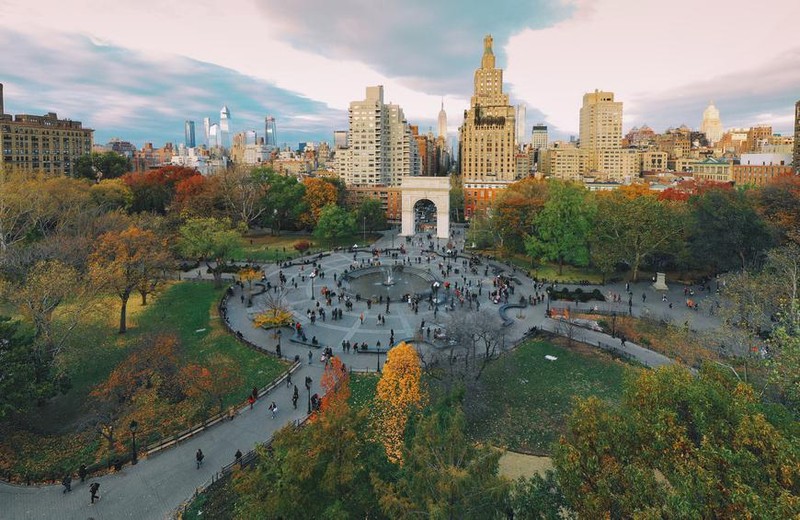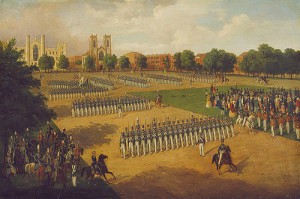Execution of Rose Butler (Former potter's field, now Washington Square Park)
Introduction
Text-to-speech Audio
Images
Washington Square Park

A painting showing the former potter's field when it was used as a parade ground

Backstory and Context
Text-to-speech Audio
In New York City, as in numerous large cities, many of its most-loved parks were once used as potter's fields. Potter's fields were burial grounds for the poor, the unclaimed, those who died during epidemics, and, in some cases, those who were executed as criminals. What is now Madison Square Park was the city's first potter's field; it began to be used in 1794 and within three years was full.
In 1797, the city purchased land for a new potter's field in what is now Washington Square Park. The city's parcel was bordered by Greenwich Lane on the north, Fourth Street on the south, Wooster Street on the east, and Minetta Creek on the west. The area made up roughly two-thirds of what is today the park. Many of the people buried in the cemetary were indigent, but yellow fever epidemics in 1798 and in several subsequent years led to hundreds being interred there, as churches were forbidden from burying victims of the epidemic in their own burial grounds.
But there was also at least one person who was executed and buried in the grounds. In 1819, a nineteen-year-old enslaved woman named Rose Butler was executed for arson. Butler admitted to setting fire to her owners' home, although no one died and there were no injuries. Butler's case eventually went all the way to the Supreme Court, but eventually she was hanged for her crime. Though there are anecdotal accounts of other executions at the potter's field, Butler's is the only known hanging there.
In the years following Butler's execution, New Yorkers' attitudes regarding slavery would change. In the colonial period, New York had one of America's highest populations of slaves. In 1827, however, the state emancipated all of its slaves. The area around the one-time potter's field would change, as well. As wealthier residents began moving into the area, they became increasingly opposed to having a gallows and a rapidly filling burial ground nearby. The area was next used as a military parade ground before eventually being transformed into one of the city's most beloved parks.
Sources
A Shift in the Village , Washington Square Park Conservancy . March 3rd 2017. Accessed January 10th 2021. http://washingtonsquareparkconservancy.org/news/2017/03/03/a-shift-in-the-village/.
French, Mary . Public Burial Ground, Washington Square Park, New York Cemetary Project . May 5th 2019. Accessed January 10th 2021. https://nycemetery.wordpress.com/2019/05/15/public-burial-ground-madison-square-park-2/.
Slavery, Gentrification, and the Last Execution in Washington Square , Village Preservation . July 9th 2015. Accessed January 10th 2021. https://www.villagepreservation.org/2015/07/09/slavery-gentrification-and-the-last-execution-in-washington-square/.
